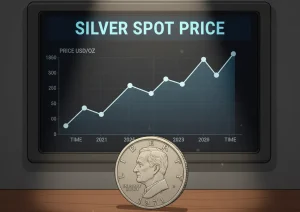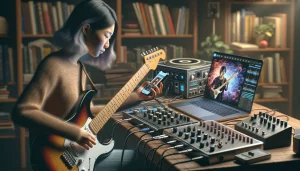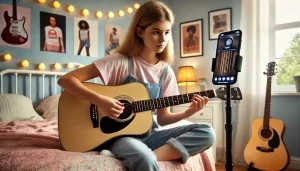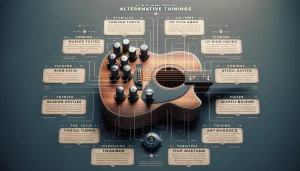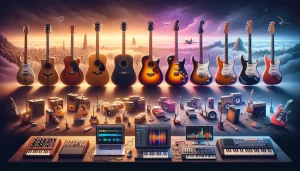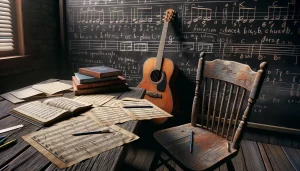Introduction to the Guitar’s Influence on Culture
Strumming the Strings of Society
The guitar is more than just an instrument; it’s a voice that speaks directly to the soul. Its influence has rippled through history like the reverberations of a perfectly plucked string, shaping cultures and movements. Think about it: from smoky cafés in Paris to sun-soaked Woodstock fields, the guitar has been there—whispering, shouting, sparking revolutions.
This isn’t just about music. The guitar often becomes an extension of the person holding it. For someone like Jimi Hendrix, it was raw electricity, rebellion wrapped in six strings. For Joan Baez, it was a vessel for peace, her melodies cutting through the chaos of war protests like sunlight piercing a dark forest. The guitar hasn’t just reflected culture—it has actively made it.
- It turned quiet folk gatherings into rallying cries for change.
- It gave birth to rock ’n’ roll, reshaping youth identity overnight.
- It bridged gaps, blending the flamenco rhythms of Spain with blues from the Mississippi Delta.
Whether acoustic or electric, humble or downright flashy, the guitar seems to embody something primal, effortlessly connecting with people across generations and borders. It’s not an instrument—it’s a movement.
Historical Evolution of the Guitar in Social Movements
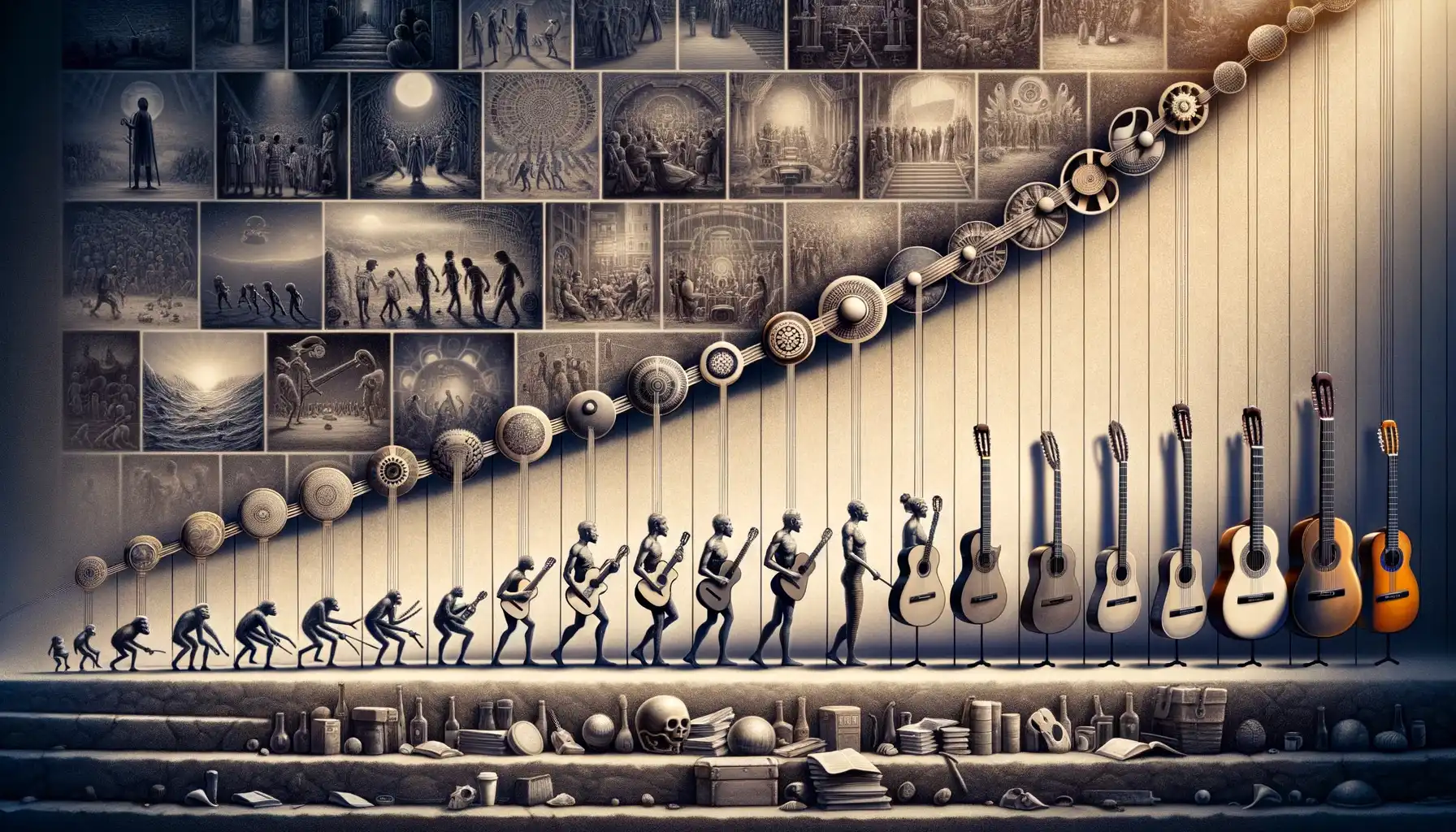
The Guitar’s Voice in the Heart of Movements
From the fiery streets of revolution to intimate gatherings of activists, the guitar has always been more than just an instrument—it’s been a companion, a rallying cry, and sometimes, a weapon of change. In the 20th century alone, the *six-string* echoed through countless battles for justice, freedom, and equality.
Think back to the American Civil Rights Movement: *a lone guitarist strumming “We Shall Overcome” could electrify a crowd, knitting their voices together like threads in a tapestry.* Or imagine Latin America, where the soulful chords of Nueva Canción served as both protest and poetry under oppressive regimes. The emotional potency of the guitar lies in its accessibility—its portability made it the perfect tool for singers like *Woody Guthrie and Victor Jara*, who sang for the disenfranchised and gave hope to the hopeless.
- The rasgueado strumming fiery flamenco rhythms in Spain’s anti-fascist resistance.
- The Delta blues of African-American sharecroppers voicing their struggles post-slavery.
Each chord played wasn’t just music—it was a bold statement, a banner waved silently yet powerfully.
Iconic Guitarists and Their Contribution to Cultural Shifts
![]()
The Revolutionaries of the Six-String
From smoky bars to sold-out arenas, some guitarists haven’t just played music— they’ve rewritten cultural narratives. Take Jimi Hendrix, for instance. He didn’t simply play the guitar; he unleashed it. His electrifying Woodstock performance of “The Star-Spangled Banner” turned a patriotic melody into a distortion-heavy anthem of rebellion, mirroring the chaos and discontent of the Vietnam War era.
Then there’s Chuck Berry. The father of rock ‘n’ roll didn’t just pave the way for modern music—he helped break down racial barriers during the segregated 1950s. With hits like “Johnny B. Goode,” Berry united black and white audiences, creating a shared musical language that defied the norms of his time.
- Joan Jett: Proving that women could shred just as hard in a male-dominated rock landscape.
- Kurt Cobain: His raw, unpolished riffs gave voice to the disaffected youth of the grunge generation.
Each note they struck wasn’t just music—it was a message, a mirror reflecting societal shifts back at us. These icons didn’t follow culture; they led it, carving their own path with every strum.
The Guitar as a Symbol in Political and Social Change
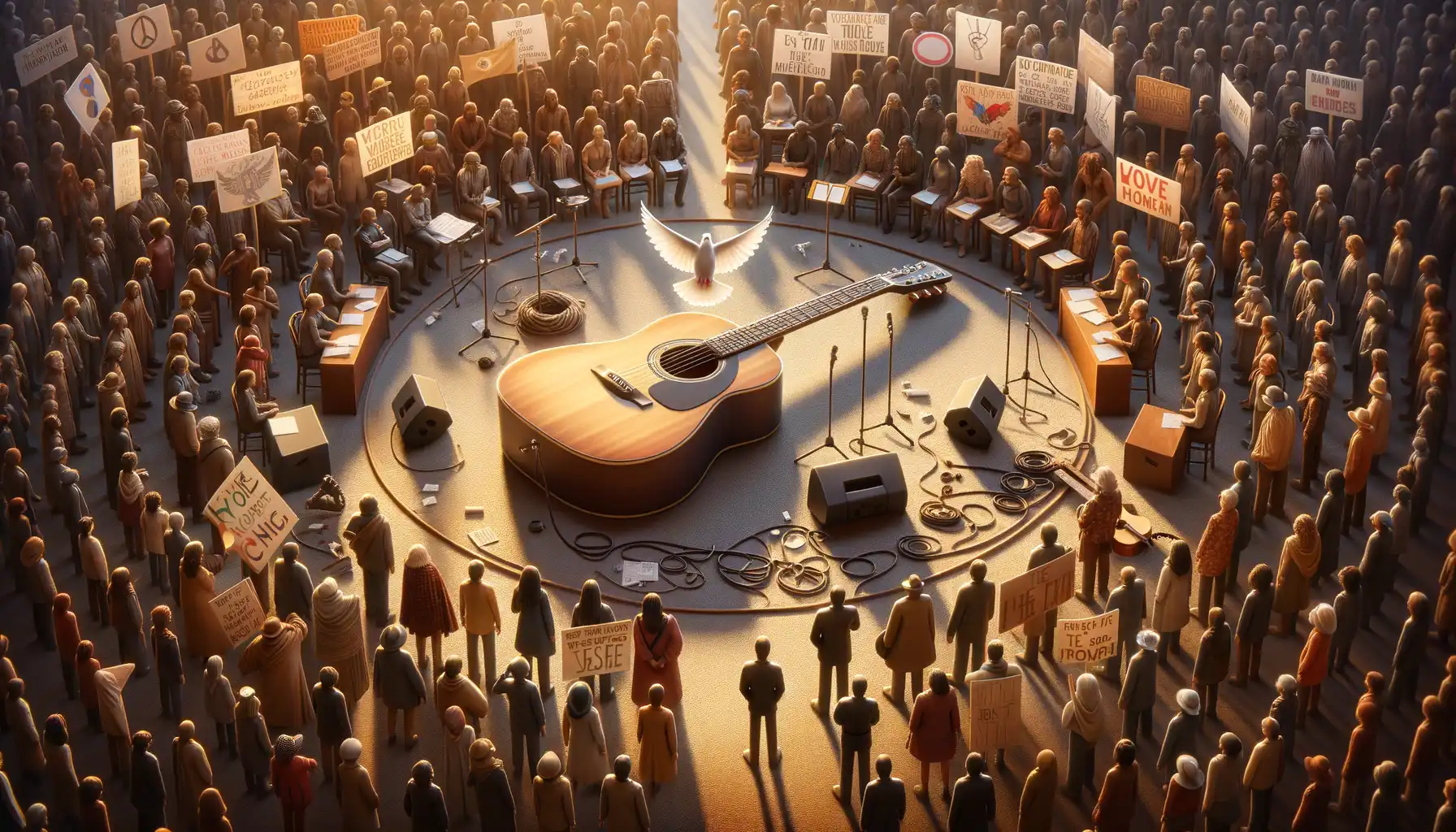
Strings That Stir Revolutions
The guitar isn’t just an instrument—it’s a messenger, a rebel with strings, and a rallying cry for those without a microphone. Through history, this unassuming six-string has slipped out of concert halls and joined marches, protests, and revolutions. Why? Because its voice—raw, haunting, or full of fire—can reach places that speeches never could.
Think of the 1960s’ folk revival: when every strum of a guitar seemed to pulse with the demand for peace and equality. Bob Dylan’s acoustic performances weren’t just music; they were moments that united generations into action. “The Times They Are A-Changin’” wasn’t just a tune—it was a prophecy sung to the weary and hopeful alike.
- The Spanish Civil War saw the flamenco guitar becoming a beacon of resistance.
- In South America, artists like Víctor Jara used their guitars as weapons against oppressive regimes.
- Anti-apartheid movements in South Africa infused heartfelt protest songs into their fight for justice, carried by nothing more than a guitar and courage.
The Guitar as a Weapon of Truth
The power of the guitar lies in its ability to be both fiercely personal and universal. Picture this: a performer on a dimly lit stage, one spotlight burning down, holding not a rifle but a guitar—a weapon of truth. Its sound travels farther than any bullet, striking the hearts of both oppressors and the oppressed.
It’s impossible to imagine political anthems without the grit of the guitar. This symbol stood proudly during Woodstock, hummed quietly in underground Soviet movements, and echoed through Tiananmen Square. When words failed, frets and chords carried humanity’s voice forward—one defiant note at a time.
Impact of the Guitar on Modern Music and Popular Culture
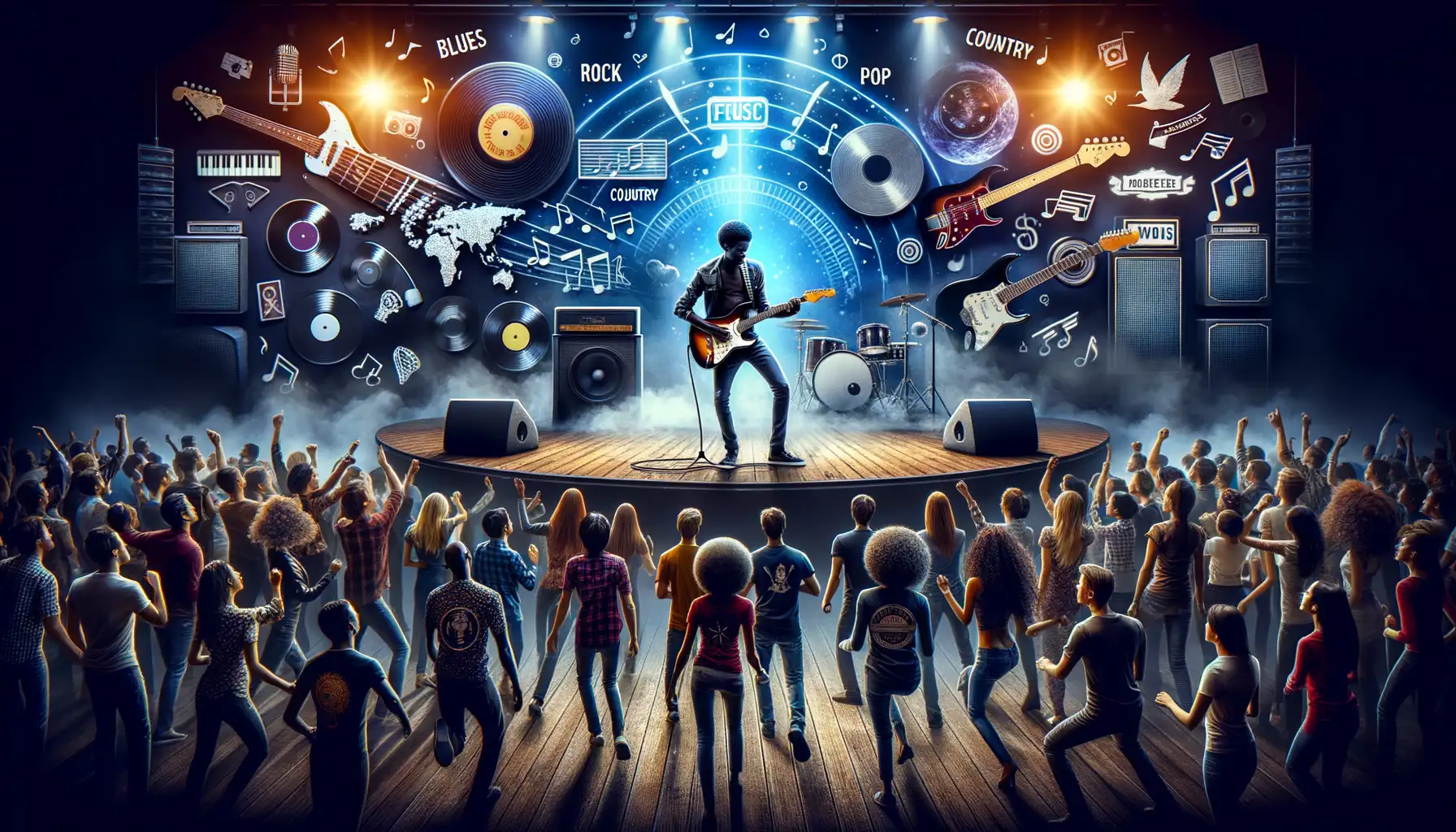
The Guitar’s Grip on Modern Musical Trends
The guitar is more than just an instrument; it’s the beating heart of modern music. Imagine a world without the electrifying solos of Jimi Hendrix, the soulful strumming of Bob Dylan, or the genre-bending riffs of Tom Morello. It’s impossible, isn’t it? The guitar’s versatility has made it the ultimate chameleon of sound, shifting effortlessly from the smoky blues bars of the 1940s to today’s pop-drenched stadium anthems.
What makes it so magnetic? For one, its ability to speak directly to your emotions. Whether it’s the raw edge of a distorted power chord or the gentle caress of fingerpicked strings, the guitar has a way of saying what words cannot. And those moments—like the wailing notes of Prince’s “Purple Rain”—become burned into the fabric of popular culture.
- In rock, it’s an adrenaline pump (think Led Zeppelin).
- In folk, it’s your storyteller (cue Bob Dylan’s acoustic melodies).
- And in pop, it’s the hidden backbone (Taylor Swift owes a lot to her six-string).
The Guitar in Fashion, Film, and Beyond
Let’s not forget: the guitar doesn’t just sound cool—it looks cool. Picture the iconic silhouette of Slash with his top hat and Les Paul, or Kurt Cobain smashing a Fender during a Nirvana performance. These moments don’t just shape music; they reshape fashion, attitudes, and even movements.
Movies like School of Rock and Bohemian Rhapsody immortalize the guitar’s cultural swagger. Its presence is so profound that holding one seems to whisper, “You’ve got the power to change minds—and maybe the world.” Whether slung low across the hip or spinning wildly on stage, the guitar transcends music, embedding itself as a universal symbol for rebellion, creativity, and self-expression.

